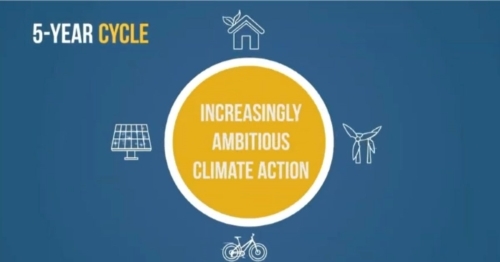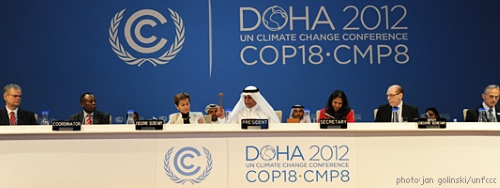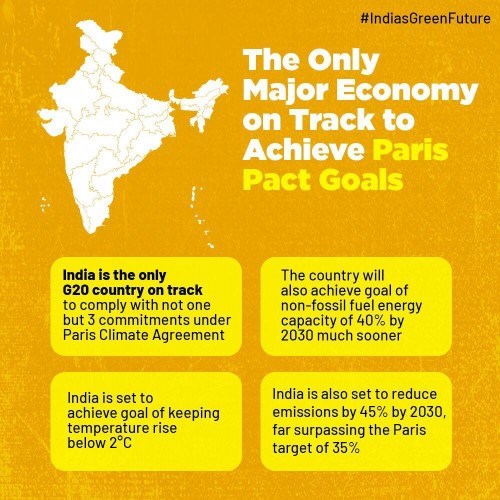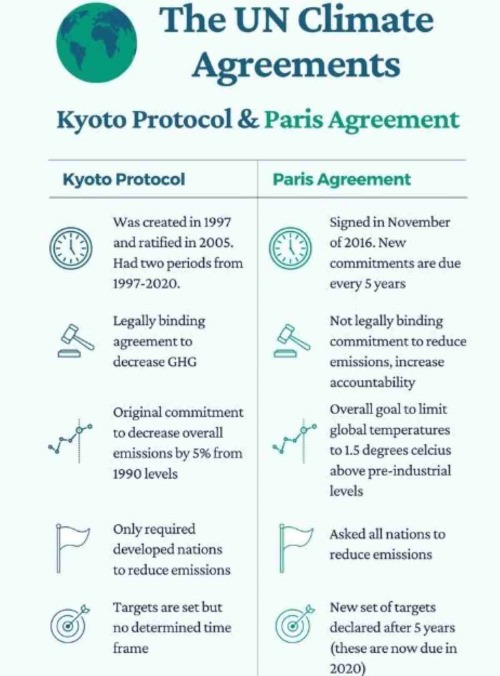The Paris Agreement and the Kyoto Protocol are two pivotal international treaties addressing climate change. While both aim to reduce greenhouse gas (GHG) emissions and mitigate climate change impacts, they differ significantly in scope, approach, and implementation.
Let’s dive into their details and explore how they shape global efforts to combat climate change, with a focus on India's role and benefits.
What is the Paris Agreement?
The Paris Agreement is a legally binding international treaty adopted by 196 Parties at COP21 in Paris, France, on December 12, 2015. It became effective on November 4, 2016.
Key Goals of the Paris Agreement
- Limit Global Warming: Keep the global temperature rise well below 2°C above pre-industrial levels, aiming for 1.5°C.
- Greenhouse Gas (GHG) Reduction: GHG emissions must peak before 2025 and decline by 43% by 2030.
- Long-Term Strategies: Encourage nations to adopt low-emission development pathways through non-mandatory Long-Term Low Emission Development Strategies (LT-LEDS).
How Does It Work?
The agreement operates on a five-year cycle where countries submit their Nationally Determined Contributions (NDCs), reflecting progressive climate action. These NDCs outline national plans to reduce emissions and adapt to climate impacts.

Source: unfccc
What is the Kyoto Protocol?
Adopted on December 11, 1997, the Kyoto Protocol operationalizes the United Nations Framework Convention on Climate Change (UNFCCC) by setting legally binding targets for developed countries to reduce GHG emissions. It came into force on February 16, 2005.
Key Highlights of the Kyoto Protocol
-
Emission Reduction Targets:
- First Commitment Period (2008-2012): 37 industrialized countries committed to reducing emissions by 5% below 1990 levels.
- Second Commitment Period (2013-2020) during Doha Amendments: Targets revised to at least 18% reduction below 1990 levels.

Source : unfccc
-
Flexible Market Mechanisms:
- International Emissions Trading
- Clean Development Mechanism (CDM)
- Joint Implementation (JI)
-
Adaptation Fund:
Established to finance climate adaptation projects in developing countries.
Paris Agreement vs. Kyoto Protocol: Key Differences
| Feature | Paris Agreement | Kyoto Protocol |
| Adoption Year | 2015 | 1997 |
| Focus | Global participation | Focus on developed countries |
| Emission Targets | Non-binding for all nations | Legally binding for developed nations |
| Approach | Long-term sustainable strategies | Short-term emission reduction commitments |
| Mechanisms | NDCs, LT-LEDS | CDM, JI, Emissions Trading |
| Adaptation Emphasis | High, including technology transfer | Moderate, supported by the Adaptation Fund |
Source: CareaboutClimate
India’s Role in Global Climate Change
What is India’s Stand on the Paris Agreement?
- Committed to achieving net-zero emissions by 2070.
- Significant focus on renewable energy expansion, targeting 500 GW of non-fossil fuel energy capacity by 2030.
- Prioritizes adaptation through policies like the National Action Plan on Climate Change (NAPCC).

Source : X.com/ BJP
Where India's stands in the Kyoto Protocol?
- Benefited from the Clean Development Mechanism (CDM) to fund renewable energy and energy efficiency projects.
- Attracted investments and technology transfers through CDM projects, stimulating green growth.
What are the Key Benefits for India from the Kyoto Protocol?
- Access to Climate Finance: Support from global funds like the Green Climate Fund and Adaptation Fund.
- Technology Transfer: Modern technologies for climate resilience and emission reduction.
- Global Leadership: Opportunities to lead climate diplomacy and renewable energy innovation.
What are theTracking Progress and Achievements of Paris Agreement & Kyoto Protocol?
1. Under the Paris Agreement:
- Enhanced transparency framework (ETF) ensures regular reporting of climate actions.
- Promoted competitive zero-carbon solutions, especially in the energy and transport sectors.
2. Under the Kyoto Protocol:
- Rigorous monitoring, review, and verification system tracks compliance.
- Encouraged green investment in developing countries.
Conclusion
The Paris Agreement and the Kyoto Protocol mark crucial milestones in the global fight against climate change. While the Kyoto Protocol laid the foundation, the Paris Agreement represents a more inclusive and long-term strategy. Together, these frameworks empower countries to transition towards sustainable development and combat the growing threat of climate change.
For more updates on global climate action and India’s role, stay tuned!

Comments
All Comments (0)
Join the conversation